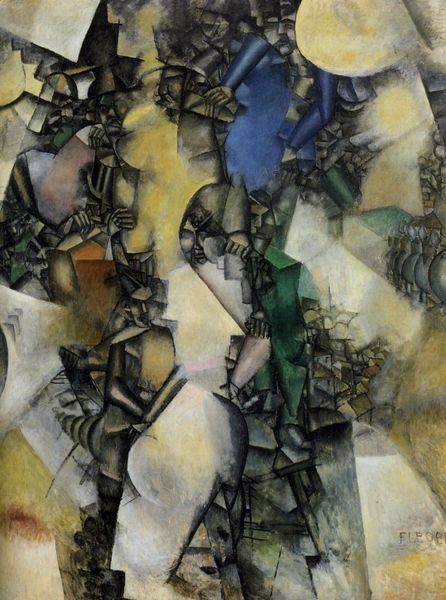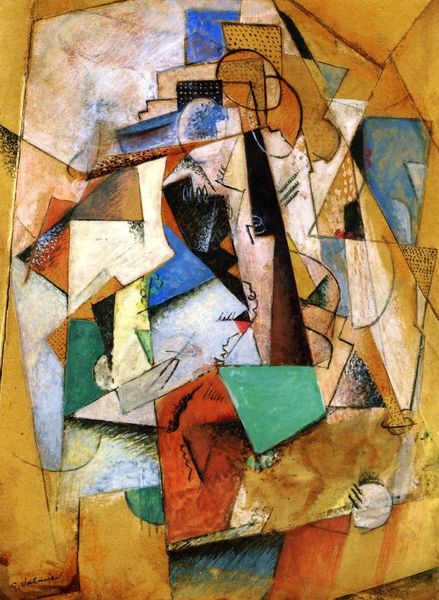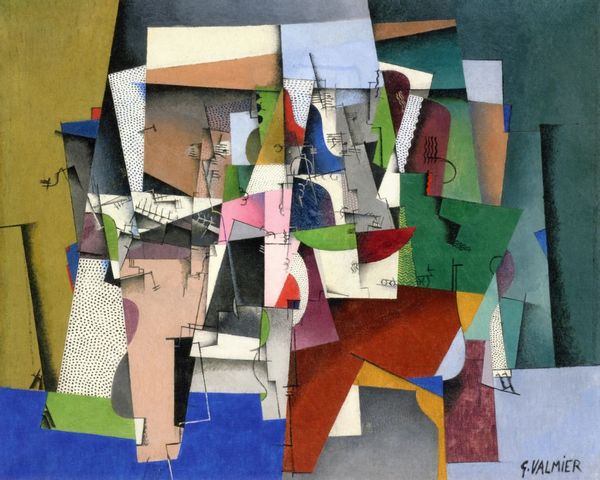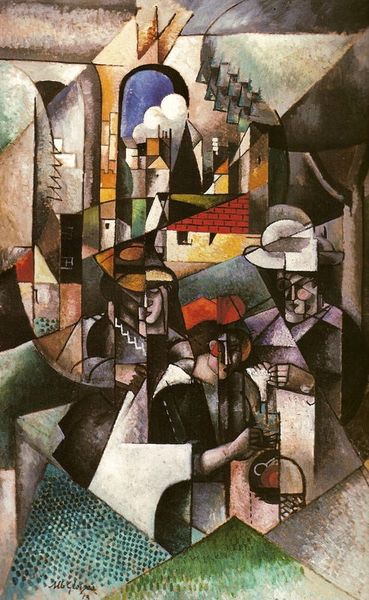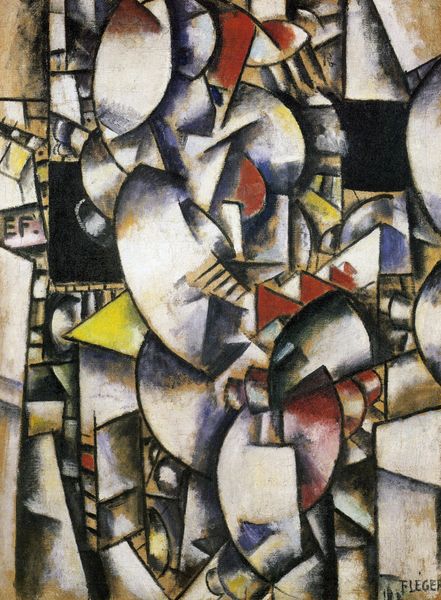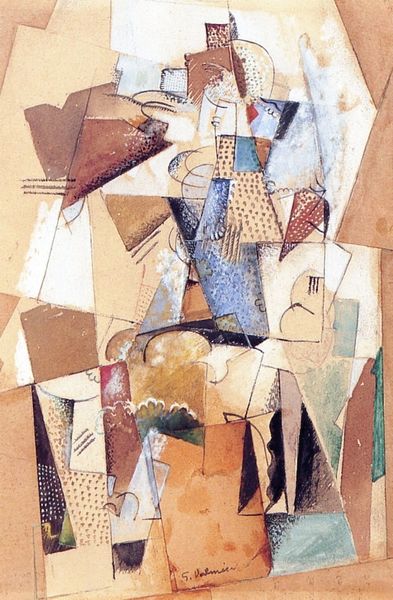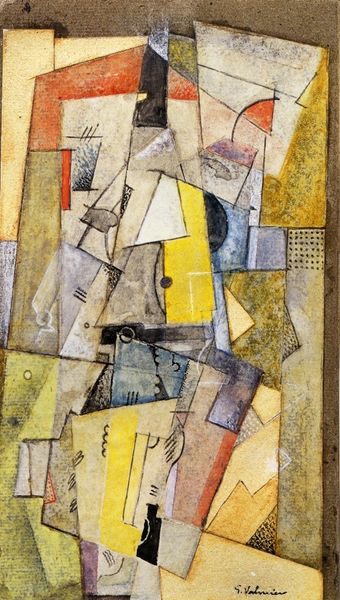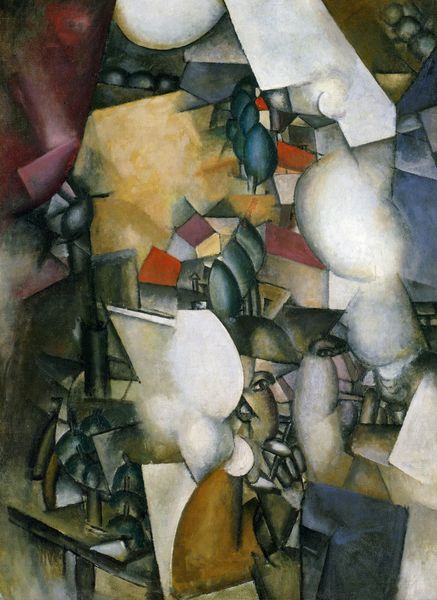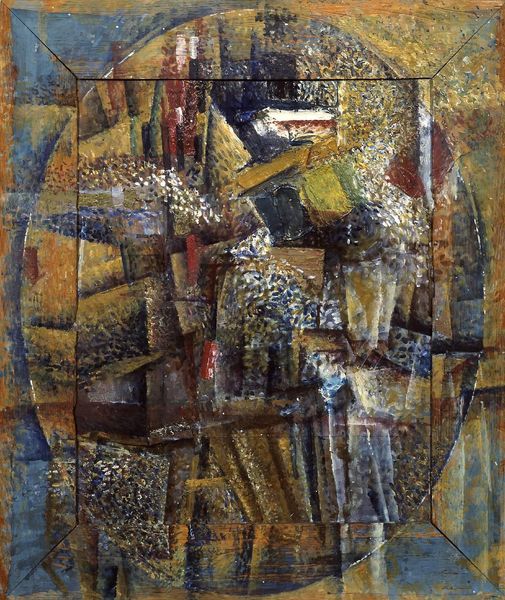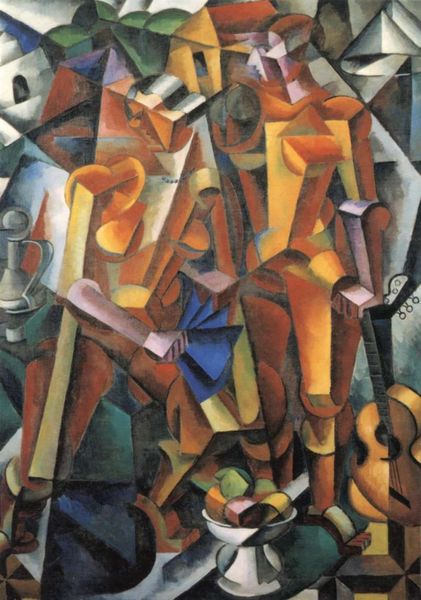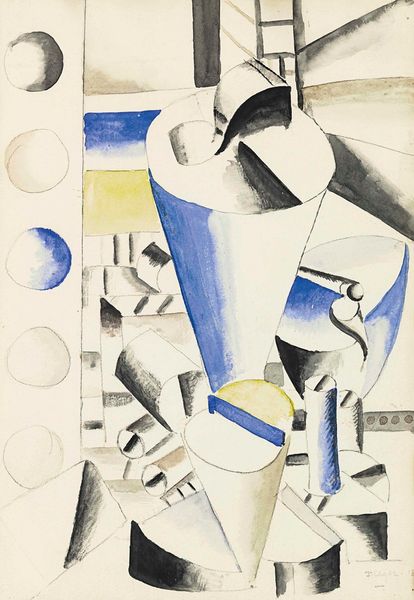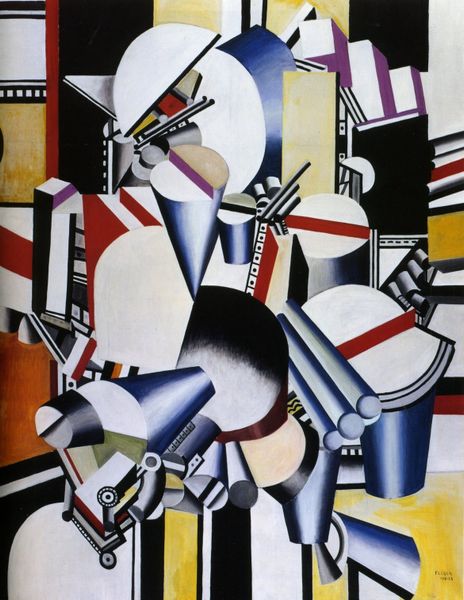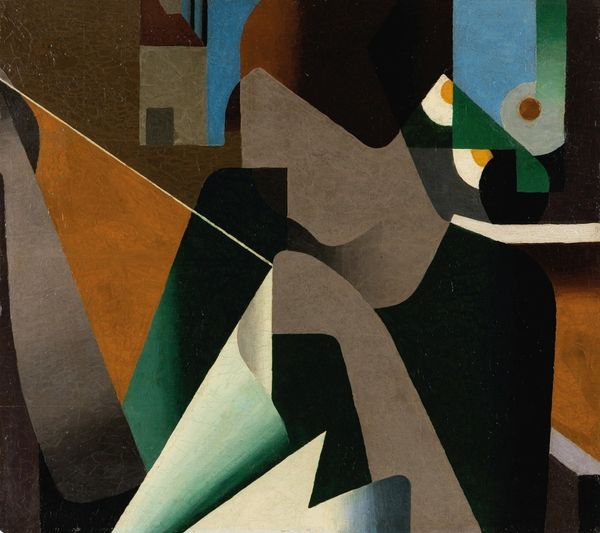
painting, oil-paint
#
cubism
#
painting
#
oil-paint
#
figuration
#
geometric
#
cityscape
#
modernism
#
futurism
Copyright: Public domain US
Curator: Here we have Albert Gleizes’s “Football Players,” painted in 1912 using oil paint. What strikes you upon seeing this artwork? Editor: It feels industrial, almost violent. The fragmented figures, combined with those grays and browns, suggest a raw, manufactured energy more than a sporting event. I wonder about the materiality that informs that aesthetic. Curator: A sharp observation. Gleizes, as a key figure in Cubism and early Modernism, fractured the visual plane, abstracting the figures into geometric forms. Consider the interplay of shapes – how the angular lines and planes create dynamism. Note also the composition—how everything seems pulled together toward the center. Editor: Right, and those geometric forms don’t exist in a vacuum. Oil paint here is used to construct this chaotic industrial scene. How does the process of layering paint, of building this scene from the ground up, shape our understanding of work? Are we meant to reflect on production as it mirrors life? Curator: It’s tempting to delve into that, but the figures retain their human form, however abstracted. We can’t dismiss the importance of subject matter here, which infuses Cubism with a touch of Futurism's celebration of motion and modern life. The fragmented bodies convey a sense of the players’ movements on the field. Editor: I see your point. Yet, how does the context of sport – a very physical, sometimes brutal activity – transform our understanding of the painting? Gleizes chose the means of oil, but how would this change if this scene had been printed or perhaps made three-dimensional through construction of new materials? It all speaks to the tension of bodies in contest—but also a changing Europe struggling toward modernism. Curator: True. The materiality speaks to an era grappling with industrial change. The visible brushstrokes and the muted palette lend it a sense of immediacy. Editor: Yes. I still see how the medium is meant to invoke something beyond the sport. How football then represents more of this broader feeling, both visually but also conceptually, that's more powerful in his message than the sporting subject itself. Curator: A perspective worth noting. Ultimately, this artwork remains a compelling example of the period's artistic inquiries, where form and subject engage in ongoing discourse. Editor: It gives new dimension to football culture's influence during a critical turn for Europe.
Comments
No comments
Be the first to comment and join the conversation on the ultimate creative platform.
